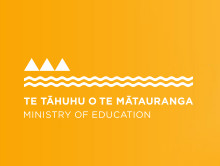I Muri i te Pānui Pukapuka
After Reading
Ka taea te whakamahi ēnei ngohe hei aromatawai, hei whakawhānui hoki i ngā pūkenga a ngā ākonga.
Possible assessment and extension activities.
1. Ka arotake ngā ākonga i tō rātou mōhiotanga. Ka wānanga i tō rātou mōhiotanga i muri i te pānui i tēnei pukapuka.
Students review their list and discuss what they now know after reading the journal.
2. Hei muri o te pānuitanga me whakakīkī ngā ākonga i te wāhanga tuarua ki te pepa rahi. Tirohia te pātai 2 i te wāhanga “I Mua i te Pānui Pukapuka” (“kua ākona e au”). Ka wānanga ngā ākonga i ngā ōritenga me ngā rerekētanga.
After reading the students fill in the second column with what they have learned. See question 2 from “Before Reading” (“kua ākona e au”). Students will fill in sheet and discuss what the similarities and differences are.
3. Me wānanga tahi ngā ākonga i ngā patapatai e whai ake nei mō ngā momo reo e toru e whakaaturia mai ana i Te Tautoko 71:
- He aha nei ngā tino āhua o te momo reo nei i ako ai tātou?
- Homai kia rima ngā tauira mō aua momo reo.
- Tuhia mai tētahi kōrero e taunaki ana i ēnei momo reo. Mā ngā ākonga tonu e tautohu ngā momo reo i tāna tuhinga.
Get students to discuss the following questions regarding any of the three language styles presented in Te Tautoko 71:
- What are the main features of the language style that we have learned about?
- Give five examples of those features.
- Produce a piece of writing that reflects your knowledge and understanding of these language styles. Students should be able to identify the language features they have included in their writing.
He hokinga whakamuri hei kōkiringa whakamua
Ideas for reflecting on learning and planning next learning steps
1. Hoatu tētahi kōrero taki anō nō pukapuka kē ki ngā ākonga, ka akiaki i a rātou ki te tautohu i ētahi o ngā tikanga reo o te kōrero taki e ōrite ana ki ērā i kitea e rātou i Te Tautoko 71.
Give students another recount text from another book and ask them to identify some examples of the language features of recount text that are the same as those that they found in the stories in Te Tautoko 71.
2. Hoatu ētahi tuhinga mō te tangata mai i ētahi atu pukapuka ki ngā ākonga, ka akiaki i a rātou ki te tautohu i ētahi o ngā tikanga reo o te tuhinga tangata i akona e rātou mai i te pukapuka Te Tautoko 71.
Give students some other biographies from another book and ask them to identify some examples of the language features that they learned from the biography in Te Tautoko 71.
3. Rangahaua ētahi iwi taketake i te ao whānui, ā, tautohua ngā rerekētanga me ngā āhuatanga ōrite ki a Ngāi Māori.
Research other indigenous peoples and identify the similarities and differences between them and Māori.



